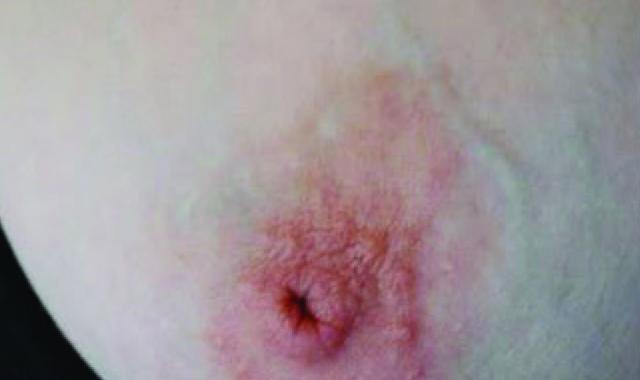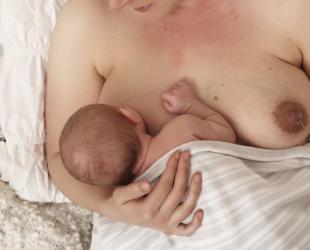You can breastfeed your baby even if you have flat or inverted nipples.

Nipples come in all shapes and sizes and sometimes one nipple looks different from the other. Most nipples stick out from the areola (the darker area around your nipple), but some are flat (level with the areola) or inverted (pulled inwards). Around 3 to 10% of women have flat or inverted nipples.
Some nipples that look inverted can pop out with a little stimulation or gentle suction. Others stay inwards. During pregnancy, nipples often become more flexible and may stick out more.

Do I need to prepare my nipples for breastfeeding?
Usually, you don’t need to do anything special before your baby is born, even if your nipples are flat or inverted. Nipples tend to become softer during pregnancy, so try not to worry. Remember, babies breastfeed - they don’t nipple-feed.
Helping your baby attach
If you have flat or inverted nipples, starting breastfeeding early helps your baby get used to your breast. Here are some tips:
- In the first few days your breasts are softer, making it easier for your baby to take a large mouthful of breast, including your flat nipple.
- It might help to gently shape your breast so your baby can get a deep latch.
Hold your baby skin-to-skin as much as possible and feed often in the first few days, so you both get lots of practice.
Ask your midwife or Lactation Consultant for help with positioning and attaching your baby.
- Try to avoid bottles and dummies at first, as they’re very different in shape from your nipple. If your baby needs extra milk, ask to feed them using a cup or syringe.
- If possible, avoid medications during labour so your baby is fully alert after birth. This helps them use their natural feeding reflexes—like rooting and sucking—during those first feeds.
If your breasts become very full (engorged), it can be harder for your baby to latch. There are ways to soften the area around your nipple to make it easier.
Helping your nipple stand out
- Try gently drawing out your nipple by hand or with a breast pump.
- Some mums find nipple stimulation or a cold compress helps the nipple stand out.
- Sometimes a baby’s suck will draw the nipple out during a feed. For some mums, the nipple stays out for a while after a feed. For others, the nipple remains out for the whole time they’re breastfeeding and then goes back to being inverted after weaning.
If you keep having problems
If your baby is still having trouble latching once your milk supply increases, a nipple shield might help. It’s a good idea to get in-person support from an ABA breastfeeding counsellor or lactation consultant.
Many mums who find breastfeeding tricky the first time because of nipple shape often find it easier with their next baby.
As one mum shared:
“My advice for women with inverted nipples is that you can breastfeed your kids. I won’t say it will be easy, but with the right support, information and equipment, you can do it and it will be worth every minute.”
© Australian Breastfeeding Association December 2025


